“This post contains affiliate links, and I will be compensated if you make a purchase after clicking on my links.”
We share our homes with them, we love them like children, we couldn’t imagine life without them… but, some of the things our dogs do make us cringe, scrunch up our noses, shake our heads and say, “why does my dog do that?!”
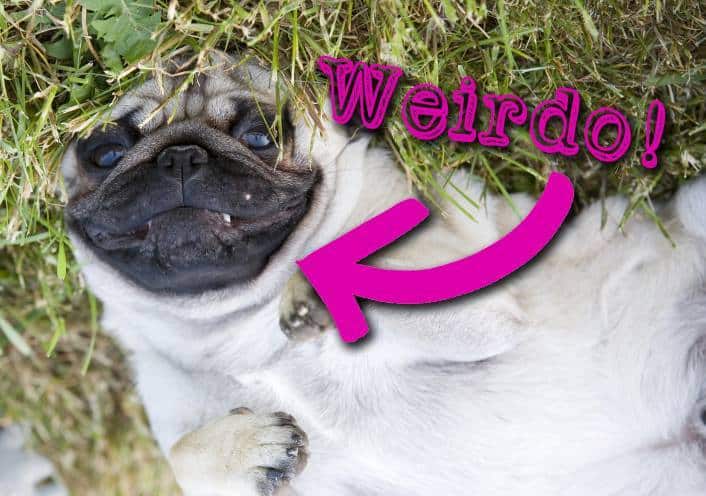
It turns out, your dog has a reason for those weird behaviors!
Does your dog engage in any bizarre behavior? We’re discussing them all – from butt-sniffing, to scooting, poop-eating, to howling at the ambulance passing by in the distance, and walking in circles before laying down (and a bunch of odd behaviors in between!). There are reasons your dogs do the things they do!
Why do dogs sniff each other’s butts?
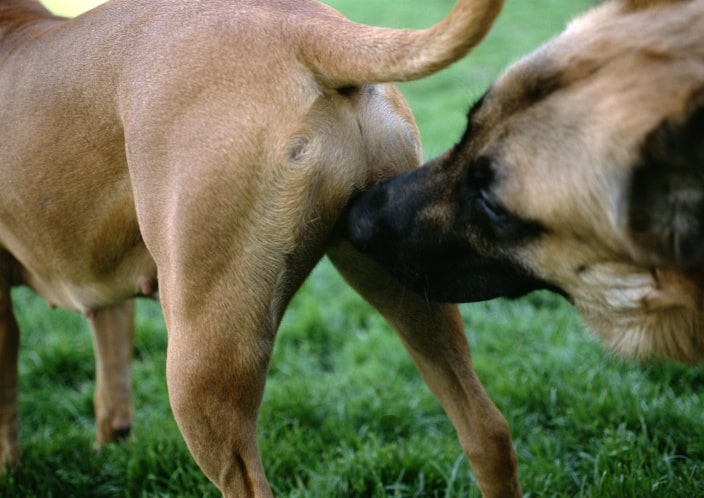
This behavior may seem totally bizarre – and it certainly wouldn’t be well received if humans participated – but it’s perfectly normal in the dog world!
Dogs have a sense of smell that can be between 10,000 and 100,000 times more sensitive than that of a human. For example, if we walk into a home where someone’s been cooking a pot roast, we’ll recognize that smell as, well, pot roast. A dog, on the other hand, will recognize the beef, the potatoes, the carrots, celery, salt, spices – each individual item as a separate and distinct odor!
So why, then, do they have to get so darn close to another dog’s rear end? They’re actually getting a whole lot of important information that way. That’s right, from a quick sniff of the rear, one dog can tell the other’s emotional state, it’s gender, it’s diet, if it’s healthy or sick, and much, more more! It’s all thanks to the chemicals stored and secreted from the sacs tucked conveniently in his rear end. In a nutshell, it’s just one of the ways they communicate and learn about one another.
Why does my dog walk in circles before she lays down?
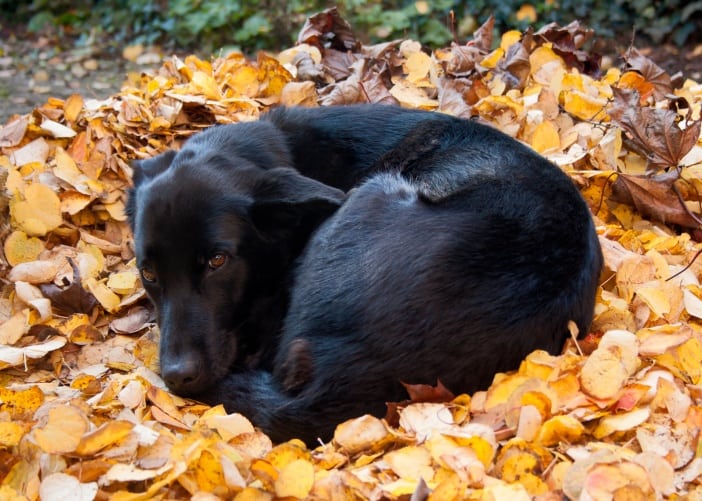
As silly as it may seem, many of the bizarre behaviors we see in our dogs are hard-wired leftovers from their ancestors of thousands of years ago, before they were domesticated. Circling in a spot before laying down is one such leftover ancestral oddity.
Circling before laying down is believed to have been done for a couple of reasons. First, for safety. Because wild dogs slept outdoors, in leaves and grass, circling an area would have forced snakes and insects nesting below the grass to scatter. And, because circling would flatted out the area, it created a visible signal to other wild dogs that the space had been claimed.
Of course, circling also makes the area more comfortable. By flattening out leaves, grass, and stems, and feeling the area with their paws for sharp objects or uneven spots, a dog could quickly tell if she and her pups would be having a good night’s sleep.
Why does my dog tilt his head when I talk to him or if he hears a strange noise?
While the simple answer is that dogs tilt their heads to hear us better, the truth is actually a bit more complex. Dogs are well known to have incredible hearing, but, they sometimes have trouble locating the source of a sound, or the direction that it’s coming from.
Tilting their heads repositions the ears, helps to open the ear canal, and allows a dog to better judge distance and position of sounds. As part of their incredible audible abilities, the slight change in sound from different positions of the ears can help a dog pinpoint its source.
But that’s not all!
Dogs also tilt their heads while listening to us speak to them as a way to first, let us know they’re paying attention and, second, as an involuntary muscle movement while they’re searching for familiar words or phrases. This is one theory you can test (and prove) right now! Get your dog’s attention and say “do you wanna…” and watch for the head tilt as they’re waiting for that magic phrase “go for a walk?”
Why does my dog howl when she hears an ambulance or a certain song?
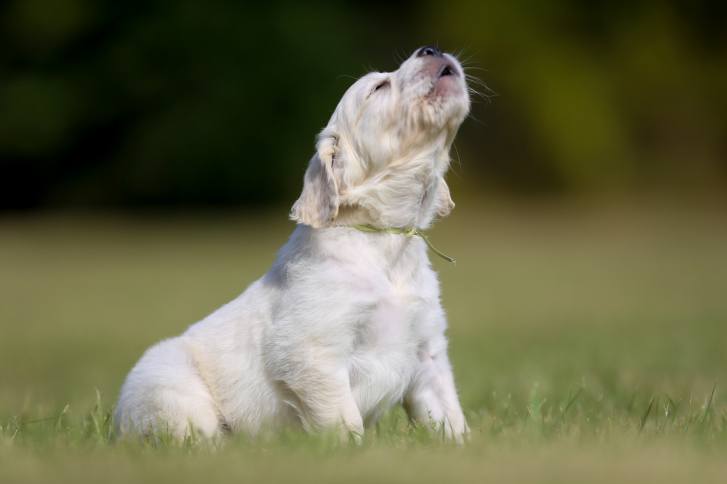
It’s not uncommon for dogs to howl when hearing certain sounds. Many dog owners have reported howling when ambulances are near by, when a certain song comes on the radio, or when they play an instrument.
Fun Fact: Dozens of pet parents have uploaded video to YouTube of their dogs howling to the Law & Order television show’s theme song! Here’s just one such video:
Howling is, in fact, another ancestral behavior that continues in today’s domesticated dogs. Many people mistakenly believe that dogs howl because the sound they’re hearing is hurting their ears – this simply isn’t true.
Dogs display a number of behaviors when they’re in pain – panting, hiding, whining or whimpering, restlessness, etc. – very rarely is howling a response to pain.
Howling is a form of communication in dogs. It is a way for dogs to signal their presence to other dogs that are often located far away. It is common in wolves and coyotes, both relatives of today’s domestic dog. Sometimes dogs will howl when they hear sirens or other loud higher pitched sounds like clarinets and flutes (or the ambulance or theme song that sets them off). Dogs do this as an instinctive response to hearing what they interpret to be another howling dog in the distance. They are not doing this because it hurts their ears.
So, the next time you see that viral video of the adorable dog playing the piano and howling along, smile and enjoy it – he certainly is!
Why does my dog mount or hump other dogs, objects, or even people?
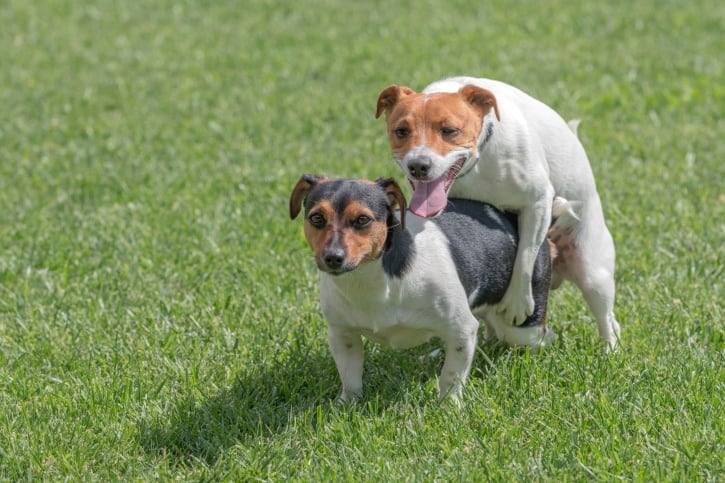
Often accompanied by giggling, pointing and sheer embarrassment is the act of a dog humping your leg, or your pillow, or a friend… Contrary to popular belief, your dog’s humping is not usually sexual in nature. If that were true, the humping would stop when a dog is neutered and no female dogs would partake in the activity!
Humping is actually a natural way for dogs to respond to over-excitement, over-stimulation, or anxiety. Or, in some cases, a humping dog is merely playing. You’ll notice while watching dogs that they often play fight, or play stalk, chase, and even play bite, so is it so unreasonable that they might play in this manner, too?
So, how do you stop this behavior? First, ignore the behavior as much as you can. Getting excited, laughing, or well, freaking out, tells your dog that he’ll get some attention if he does it, thereby reinforcing the behavior. Second, give him (or her) an alternative activity. If you notice that humping happens when your dog is overly excited, give him something calm to do, like chew on a bully stick, a stuffed Kong toy, or play with a puzzle game. If he’s an anxious humper, remove him from the anxious situation and allow him time to relax and feel comfortable. Most importantly, just remember your dog is just doing what dogs do!
Why does my dog eat poop?
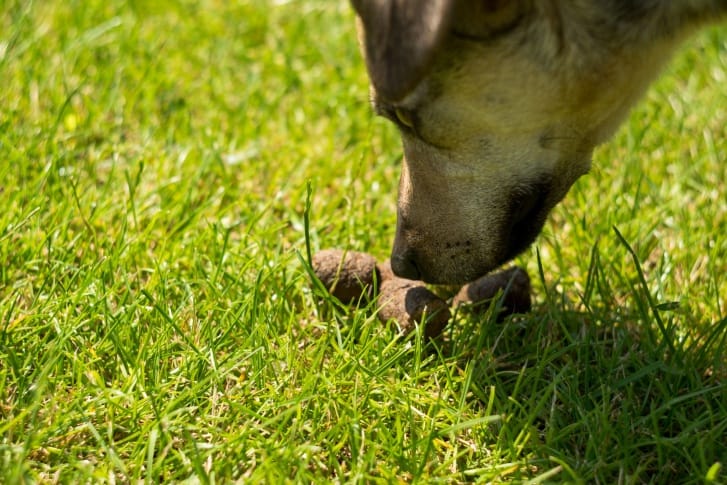
Really, it doesn’t get much more disgusting than catching Fido in the act of eating his (or his doggie friend’s, or the cat’s) poop. Coprophagia. Yes, it’s common enough that there’s a word for it. And, there’s a perfectly logical explanation.
You may not realize this – maybe it’s not the topic of your everyday conversations – but dogs eating poop really isn’t all that unusual. Yes, it’s disgusting, but it turns out it is a natural behavior and most dogs are hard-wired to do it.
Long before dogs became members of the household, they were wild animals that would fall prey to other carnivores. It was the role of the mother to protect her litter of pups, and that included ridding their scent from the area – you guessed it – by eating her puppies’ poop. Of course there are other, less sweet reasons a dog eats feces. Some are just plain hungry. Some actually enjoy the smell or taste (you’d be hard-pressed to find a dog that doesn’t love snacking from the cat’s litterbox!), and some are looking for specific nutrients they might be missing from their diet.
If poop-eating is excessive, talk to your veterinarian to rule out any health issues. If all’s well – and it usually is – there are ways to curb this behavior through training or dietary supplements that make poop less palatable.
Why does my dog chase her own tail?
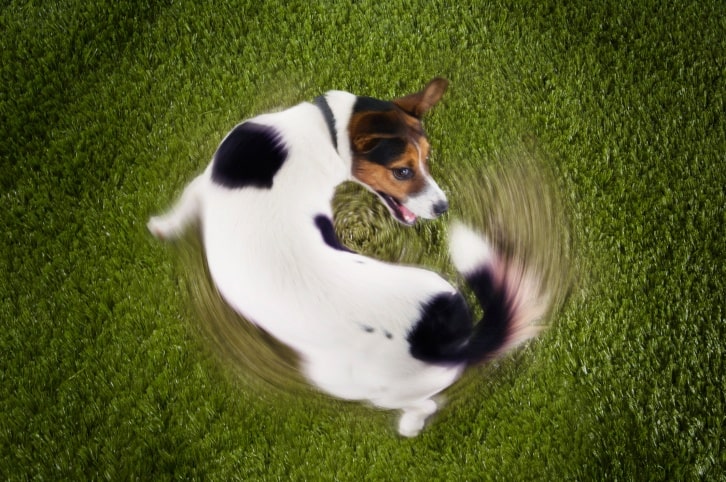
There’s no single correct answer for why dogs may chase their own tail. In fact, they could be doing it for a number of reasons, some of which are just silly while others might require the help of a veterinarian.
Some dogs, especially puppies, are simply intrigued by that floopy-floppy-dangly thing on their backside and chase it for fun. Some dogs do it out of boredom or to expend some pent up energy. Sadly for some dogs, tail chasing can be a learned behavior if they’ve been kept in a cage or kennel that’s too small to comfortably move around. For others, it’s a compulsive or obsessive behavior that, if the behavior is excessive, can be treated with medication. And, of course, your dog could be chasing his tail to bite at fleas or to find relief from irritated anal glands.
Bottom line, if tail chasing is obsessive in nature, excessive, or results in hair loss or injury to the tail, consult your veterinarian or behaviorist for help.
Hey, while we’re on the subject, might as well enjoy watching this adorable puppy chase his own tail… he even tries to sneak up on it a few times!.
Why do dogs roll around in disgusting, smelly stuff?
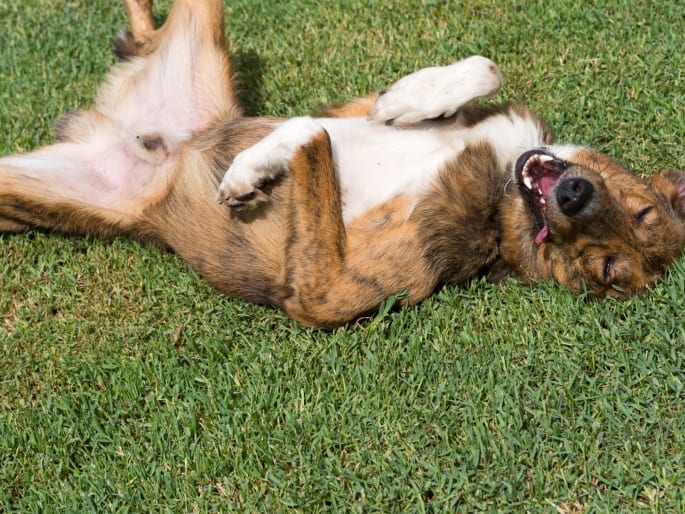
Animal poop, a dead frog, decomposing garbage… the nastier, the stinkier, the BETTER! Why on earth would our dogs enjoy rolling in disgusting, stinky stuff? There are a few different theories on the topic.
The most popular theory says this is a trait carried down from their wild ancestors. Experts believe dogs roll in stinky stuff to mask their own scent, making it easier to sneak up on prey. While the wild dogs’ prey could probably smell a stinked-up dog coming from a mile away, they wouldn’t expect to be attacked by something that smells like it’s already dead.
Other theories say that rolling in something gross is a way for dogs to advertise to others that they’ve found something awesome. Some have suggested that dogs do it, particularly after baths or when recently groomed, to get rid of a perfume or soap that they don’t like the smell of. And, another theory says that the oils and fats of decomposing animals or garbage act as a skin and coat conditioner, an ancestral beauty regimen of sorts.
Why does my dog carry a mouthful of food from his bowl to another location to eat it?
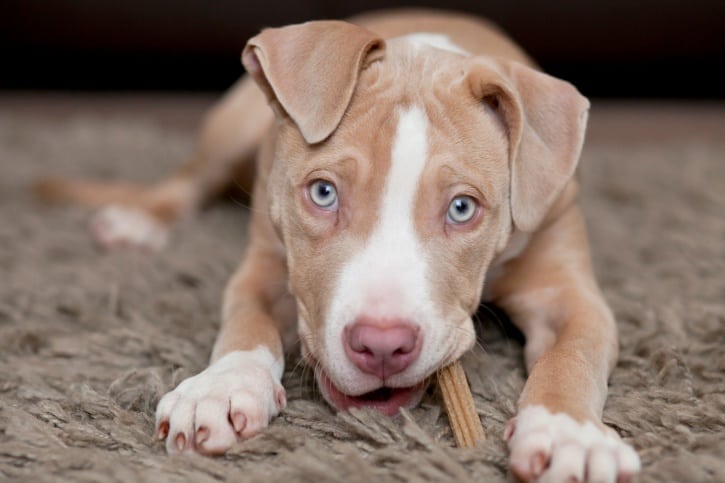
There are two schools of thought on this bizarre habit. The first says that moving their food away from its source to chow down in another location is a leftover behavior from your dog’s wild ancestors that lived, hunted, and ate in packs. In a pack, the less dominant members of the group would take a portion of the kill and move to a safe, distant location to eat in peace and to avoid being challenged by higher ranking pack members. Even dogs without four-legged family members to protect their food from continue this instinctual practice to this day.
It could also be a symptom of your dog simply not liking his bowl or where it’s located. He may not like the sound his kibble makes as it clinks and clanks along the sides of the bowl. His bowl may not be a comfortable height, width, or depth for maximum eating pleasure. His tags may bump the edge of the bowl, making an irritating sound or distracting him from the task at hand.
While this behavior is fairly harmless for kibble feeders, dogs that insist on relocating messy wet or raw foods could create quite the mess. To curb the behavior, try moving his bowl to a more secluded location. Or, try a different type of bowl entirely. If you feed from an elevated dish, try lowering it. If you feed from a bowl on the floor, try raising it. Or just switch to a flat, open dinner plate and see if the behavior stops. And, if you’ve got a multi-dog household, try feeding your dogs in separate locations.
Why does my dog eat grass?
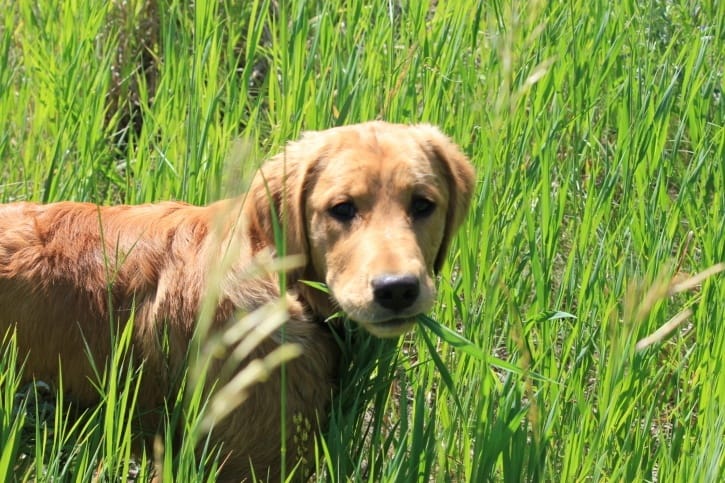
We’ve almost all heard the saying that a dog eats grass when they don’t feel good or if they have an upset stomach. And, while these may be true some of the time, it’s not always the case.
Luckily, most experts believe that occasional grass snacking is not something dog owners need to worry about. So why on earth do dogs gobble up the green stuff?
There are two generally accepted answers to this question. Any pooch will seek out a natural relief for a gassy or upset stomach, and grass, apparently, does the trick. When ingested, the grass blades tickle the dog’s throat as well as his stomach lining. This sensation causes the pooch to throw up, especially when the grass has been gulped down instead of chewed on. A sick pooch will usually eat grass in big bites and then vomit.
Although dogs don’t normally graze on large amounts of grass like cows do, they may nibble on grass or chew on it for a while, and not vomit. Some dogs simply find the grass taste palatable, other breeds do it to add a little roughage to their usual diet.
Whatever the reason behind grass eating, most experts see no harm in letting a dog munch away from time to time. As a matter of fact, the grass contains some essential elements that a pooch may actually crave, especially if he’s been on a commercial diet.
Watch out for any sudden increase in grass-munching as it could be a warning sign of a more serious underlying condition that your pup may be trying to self-treat. This of course will require immediate vet assistance. If your dog is one that simply likes to graze, but is healthy and happy, just make sure the grass he’s eating hasn’t been treated with chemicals or pesticides which actually CAN be quite harmful for Fido.
Why do dogs kick when you scratch their belly?
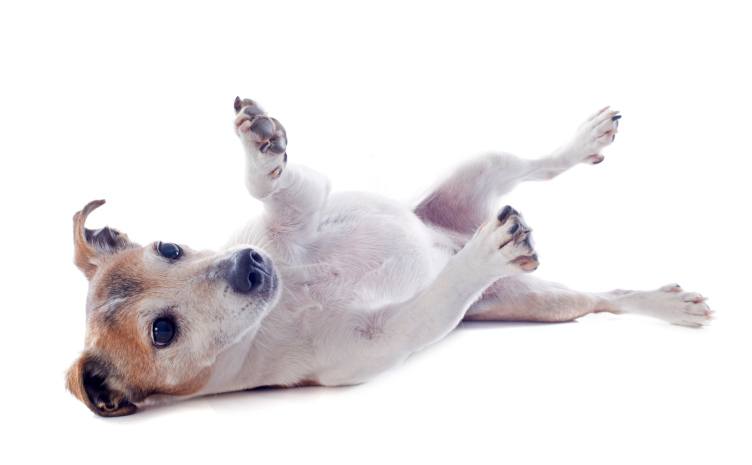
If you’ve got a dog that loves belly rubs, as many of us do, than you’ve no doubt found “the sweet spot” that gets his leg kicking. This usually happens when you scratch him in his saddle region – the belly, sides, and parts of the dog’s back. The exact spot varies depending on the dog. Some dogs have several spots that get their legs moving.
Dogs kick their legs when you hit that sweet spot due to something known as the scratch reflex, an involuntary reaction. Much in the same way the wind or a bug might irritate his skin, causing him to flinch or scratch, when you hit this particular spot on your dog’s belly (or back, sides, etc) you’re both causing the itch and simultaneously scratching it. But, it still feels incredibly good to your dog, so keep it up!
The scratch reflex isn’t just a funny party trick for your dog, either. In fact, veterinarians can use the spot to identify nerve damage or neurological problems. The belly rub kick can be compared to the knee-jerk that humans do when the doctor taps just below your knee with a hammer, or how cats automatically raise their bottoms when you scratch the base of their tail.
What other odd behaviors does your dog exhibit? Let us know in a comment below and we’ll explain!
In the meantime, since you clearly love learning about dogs and some of their odd ancestral behaviors, check out these 25 ancient dog breeds that may have contributed to your dog’s wacky habits before going extinct!





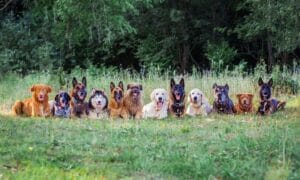













Geraldine Boyle.
Feb 18, 2021 at 2:53 pm
My dog (half labrador/half basset) whines all the time when in the car. He loves been in car as he always wants to get inside if car is about to move. Always sits on back seat. Just moans/whines non-stop. Why would he do this.? How can I stop him?
james harley
Jan 28, 2021 at 8:17 pm
My German sheapard is well fed twice every day but always acts like he
is starving when it comes time to eat. He literally races at full speed
to get to his food. He is in no way under fed.
Judygayle
Feb 27, 2020 at 6:54 pm
When my dog is playing with my cat. He puts his butt to her face. Like a defensive move kind of what does that mean?
Linda Smith
Feb 25, 2019 at 6:50 pm
My pitbull mastiff used to go outside in the backyard to use the bathroom and play, But now he will not go outside at all. He will run to couch and just look at you. Does anyone know why this has happened?
Christopher DelSavio
Feb 11, 2019 at 10:52 pm
My dog watches television, he runs to it barking, and tail wagging if any type of animal come on. He sometimes will let us know if the television is not on and he would like it on.
Gary
May 4, 2020 at 5:59 pm
My dog rubs his face against the tile floor while lying side down and kicks forward with his front paws almost as if he is trying to knock something out of his mouth
Denise Eadie
Sep 12, 2018 at 5:13 am
Why does my puggle constantly run his backside along the furniture then constantly sniff it. Heconstanly sits for a second then stands for second sniff furniture sit stand sniff drives us mad is this anal issues
Buffaloannie
Sep 11, 2017 at 4:23 pm
One of our five Newfoundland dogs picks up a food bowl with uneaten kibble in it, carry it way across the yard, eat the kibble then carry the bowl to one of our trees and fills the bowl with soil, grass and mulch. He then carries the full bowl to the front of the house. He does it often, sometimes to multiple food bowls. It takes me ten minutes to gather the food bowls in the morning as our yard is 2 acres. Isn't that odd?
max
Aug 9, 2017 at 12:45 pm
One of my schipperkes lays on his back with his feet sticking up in the air. I think he does it because he suffers from the heat, he also loves laying on AC vents.
K'Ehleyr
May 15, 2017 at 4:02 pm
Cabbage leaves! My mom dropped a cabbage leaf once and my Jack Russell Rat Terrier mix snatched it up, RAN, and ate it up too. Then came and begged for more!! Our Rat Terrier Chihuahua Dauchund mix sniffed it and was like,'what's the big deal?"
suzy q
Nov 16, 2016 at 12:13 am
My dog is female, and not fixed. I understand she goes through heat. But why does she hump my mom? Shes tried humping me as well.. But i got her to stop. This is embarassing for me and my mom but she mounted my moms foot while she was asleep and got her toe… If you know what i mean.. Anyway i can help break this behavior?